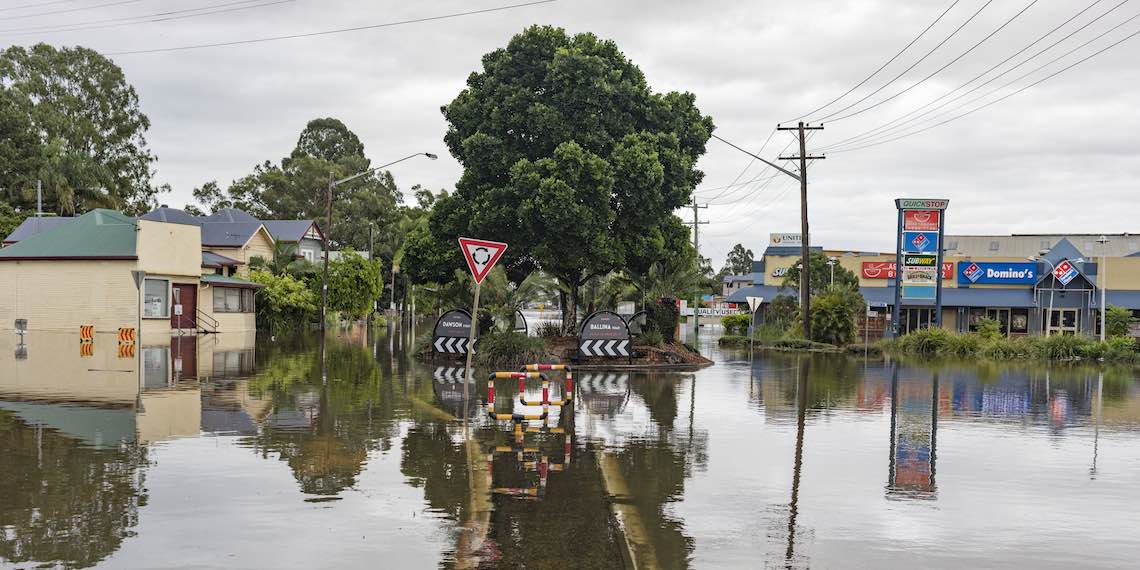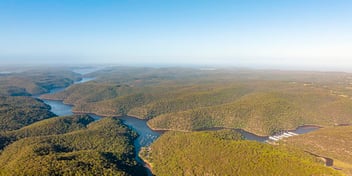Going beyond the worst: preparing for the next unprecedented flood

Water managers in Australia’s eastern states and territories can expect more of the same wet conditions experienced so far in 2022, with the Bureau of Meteorology declaring last month that the third La Nina event is underway in the tropical Pacific.
And, while floods are nothing new, Interflow Contract Manager John Weaver said the unimaginable floods that hit the Northern Rivers region earlier this year delivered an important warning: flood events are becoming bigger and more destructive than ever expected.
“Accurately predicting the magnitude and duration of floods is a big issue for water managers these days,” he said.
“The people I have spoken to about recent floods in Australia have all said the same thing: the floods are getting worse, and are impacting larger areas than many people working in water today have ever known.”
To protect the integrity of their networks, many water authorities already keep a close eye on their asset conditions in preparation for potential floods, but Weaver said that expecting worse than the worst can help bolster adequate preparation for unprecedented events.
“Global warming is real. Longer droughts and bigger floods are on the way,” he said.
“Being prepared is all about accepting this reality, and thinking ahead of time about practical ways to deal with these realities when they materialise is key.”
All eyes on assets
The most pressing concern for water managers when it comes to preparing for floods differs depending on the location, Weaver said, but understanding the condition of assets is one of the most crucial aspects of preparing for future floods.
“When it comes to preparing for potential floods, it is different between the city and the regions. But most water utilities and councils are now very aware that they need to have a plan in place to assess the condition of their assets and take action to maintain them,” he said.
“If you have a flood on a sewer that's very old, made of concrete and deteriorating, the sewer main is going to collapse. Having a flood is bad enough, but when a sewer main or water main collapses it’s a huge problem.
“A lot more water ends up in the system than it's designed to handle. And, in these instances, old and unmaintained pipes will fracture. Old concrete and clay pipes are very rigid and if they come under too much pressure they simply crack.”
While water managers need to be on top of their asset conditions, Weaver said preparing for future floods in the era of global warming requires being open-minded about how damaging the next event might be.
“Water managers need to be on top of their asset conditions, but they should also consider challenging them, as well,” he said.
“For the most part, we are all doing a very good job in terms of maintaining assets, except for when you get an unprecedented flood, like the one we just had on the Northern Rivers.
“The council there was doing everything right: they had levies in place and had an eye on their assets, as they had learned from past floods. But the flood was much bigger than they thought it could be. It simply surpassed all of their preparation levers.
“That’s climate change for you.”
Weaver said the best thing water managers can do in the face of more extreme water events, aside from staying on top of asset maintenance, is challenge their models.
“There are various methods for doing this, but the key is to assume that the next flood will come sooner than expected and will be twice as bad as is imaginable,” he said.
“So, assets may be in decent enough condition to handle the types of floods we have seen in the past, but what will happen to the network if the next one surpasses our historical data? Will it manage that? If not, then we need to prepare practically for the worst.”
Resourcing response
Another key learning from the Lismore flood event is the need to have adequate alternatives for communication, power and emergency clean water provision, Weaver said.
“When floods are bigger than we expect, a lot more people are impacted, which makes ensuring everyone is safe a lot harder to do,” he said.
“Power and water go together. As soon as there is a flood, the power supply shuts down, which means your ability to pump water to houses shuts down. If someone is isolated for four or five days without safe water and communication, there can be very dire consequences.
“It might seem really simple, but communication is a big issue when responding to these huge flood events. In Lismore earlier this year, even letting people know help was on the way was a challenge, let alone actually reaching them.”
Water supply is a fundamental need, Weaver said, and getting water to those people who are cut off, many without a means of communication, is becoming more and more challenging as flood events become bigger.
“It’s important for us to come up with innovative ways of managing these circumstances, because there will be more floods and they will be worse than what we have already seen,” he said.
“One thing I heard at the AWA Conference in Macquarie recently was that the Australian Government is working with NASA to put solar plants on satellites to orbit the earth, and send power back as microwave energy.
“This solution can really help to bolster the communication and power issues people experience during extreme weather events here on earth. It’s a flood-proof power approach, which could become quite useful in a matter of years.
“It’s an example of the types of practical solutions we can start exploring to help us manage flood scenarios that go beyond anyone's expectations.”

